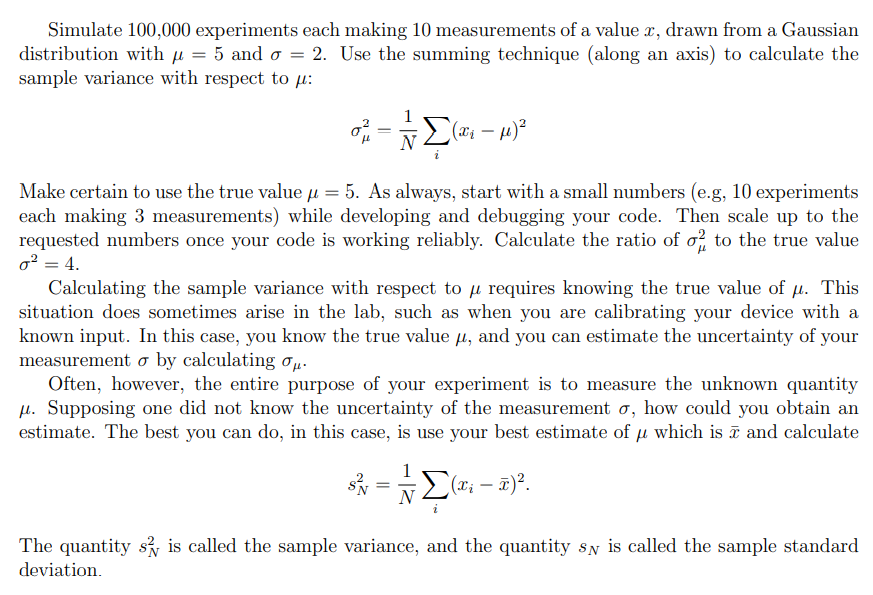

Jupyter Notebook Simulate 100,000 experiments each making 10 measurements of a value x, drawn from a Gaussian distribution with u = 5 and o = 2. Use the summing technique (along an axis) to calculate the sample variance with respect to : (2x )2 Make certain to use the true value j = 5. As always, start with a small numbers (e.g, 10 experiments each making 3 measurements) while developing and debugging your code. Then scale up to the requested numbers once your code is working reliably. Calculate the ratio of o to the true value O = 4. Calculating the sample variance with respect to u requires knowing the true value of p. This situation does sometimes arise in the lab, such as when you are calibrating your device with a known input. In this case, you know the true value pl, and you can estimate the uncertainty of your measurement o by calculating - Often, however, the entire purpose of your experiment is to measure the unknown quantity H. Supposing one did not know the uncertainty of the measurement o, how could you obtain an estimate. The best you can do, in this case, is use your best estimate of u which is and calculate ? The quantity s is called the sample variance, and the quantity sy is called the sample standard deviation. Jupyter Notebook Simulate 100,000 experiments each making 10 measurements of a value x, drawn from a Gaussian distribution with u = 5 and o = 2. Use the summing technique (along an axis) to calculate the sample variance with respect to : (2x )2 Make certain to use the true value j = 5. As always, start with a small numbers (e.g, 10 experiments each making 3 measurements) while developing and debugging your code. Then scale up to the requested numbers once your code is working reliably. Calculate the ratio of o to the true value O = 4. Calculating the sample variance with respect to u requires knowing the true value of p. This situation does sometimes arise in the lab, such as when you are calibrating your device with a known input. In this case, you know the true value pl, and you can estimate the uncertainty of your measurement o by calculating - Often, however, the entire purpose of your experiment is to measure the unknown quantity H. Supposing one did not know the uncertainty of the measurement o, how could you obtain an estimate. The best you can do, in this case, is use your best estimate of u which is and calculate ? The quantity s is called the sample variance, and the quantity sy is called the sample standard deviation








